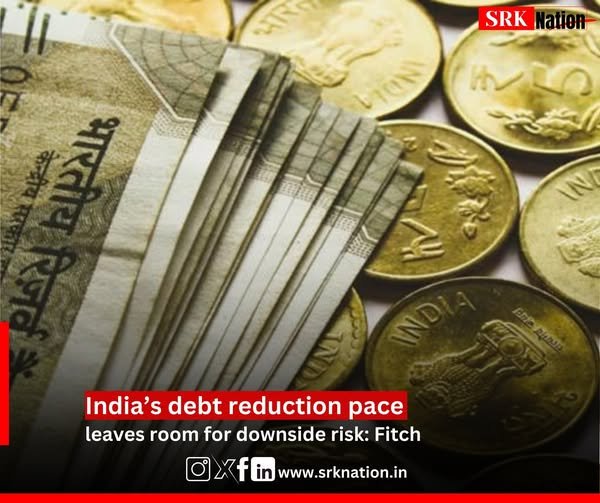India’s forex reserves dropped by USD 5.693 billion to USD 634.585 billion in the week ended January 3, the Reserve Bank of India said on Friday.
In the previous reporting week, the overall kitty had declined by USD 4.112 billion to USD 640.279 billion.
The reserves have been on a declining trend for the last few weeks, and the drop has been attributed to revaluation along with forex market interventions by RBI to help reduce volatility in the rupee. The forex reserves had increased to an all-time high of USD 704.885 billion in end-September.
For the week ended January 3, foreign currency assets, a major component of the reserves, decreased by USD 6.441 billion to USD 545.48 billion, the data released on Friday showed.
Expressed in dollar terms, the foreign currency assets include the effect of appreciation or depreciation of non-US units like the euro, pound and yen held in the foreign exchange reserves.
Gold reserves increased by USD 824 million to USD 67.092 billion during the week, the RBI said.
The Special Drawing Rights (SDRs) were down by USD 58 million to USD 17.815 billion, the apex bank said.
India’s reserve position with the IMF was down by USD 18 million at USD 4.199 billion in the reporting week, the apex bank data showed.
India’s foreign exchange reserves fell for the fifth consecutive week to a 10-month low of $634.59 billion as of Jan. 3, data from the Reserve Bank of India (RBI) showed on Friday.
The reserves declined by $5.7 billion in the reported week, after falling by a cumulative $17.8 billion in the prior three weeks. Reserves have fallen by about $70 billion from their all-time high of $704.89 billion in late September.
The rupee has faced persistent headwinds over recent weeks, as the dollar has strengthened and capital flows have slowed following a slowdown in India’s economic growth.
The central bank has routinely intervened in the foreign exchange market via state-run banks to limit the rupee’s losses.
The magnitude of the RBI’s forex intervention since October has been “substantial” and is resulting in “adverse effects”, such as tighter banking system liquidity and higher short-term rates at a time of weakening growth, Nomura analysts said.
This, in turn, is leading to more capital outflows and possibly “dollar hoarding” in anticipation of further depreciation in the rupee, Nomura said.
Changes in foreign currency assets are caused by the central bank’s intervention in the forex market as well as the appreciation or depreciation of foreign assets held in the reserves.
The RBI intervenes on both sides of the forex market to curb undue volatility in the rupee.
The rupee settled at 85.9650 to the dollar on Friday, after hitting a record low of 85.97 earlier in the session. The domestic unit fell 0.2% this week, its tenth consecutive weekly fall.
The forex reserves also include India’s reserve tranche position in the International Monetary Fund.
The rupee declined 18 paise to breach the 86-mark against the US dollar for the first time on Friday as it failed to resist pressure from a stronger American currency and huge outflow of foreign funds.
The local unit settled at 86.04 against the US currency.
Surging crude oil prices overseas and negative sentiment in domestic equity markets also weighed down on the Indian currency, forex traders said.
Also, dollar strengthened on increased demand amid the anticipation of restrictive trade measures by the new US administration after Donald Trump takes over as president on January 20.
At the interbank foreign exchange, the rupee opened at 85.88, hit the intra-day peak of 85.85 before breaching the 86-mark to settle at the lowest-ever level of 86.04 against the greenback, 18 paise lower from its previous close.
On Thursday, the rupee gained 5 paise to settle at 85.86 against the US dollar, recovering from the steep decline of 17 paise in the preceding session.
Anuj Choudhary, Research Analyst at Mirae Asset Sharekhan, said the rupee hit another record low as domestic markets continued to slide and FIIs outflows sustained. A strong US dollar and surge in crude oil prices also pressured the rupee.
“Weak tone in the domestic markets, a strong greenback and persistent FII outflows may continue to put downside pressure on the rupee. Rising crude oil prices, as well as surge in the US treasury yields may further weigh on the domestic unit.
“However, any RBI intervention may support rupee at lower levels. Traders may take cues from the non-farm payrolls report and consumer sentiment data from the US. USD-INR spot price is expected to trade in a range of ₹85.80 to ₹86.15,” he said.
Meanwhile, the dollar index, which gauges the greenback’s strength against a basket of six currencies, was trading 0.01 per cent higher at 109.01. The 10-year US bond yields also rose to its April 2024 level at 4.69 per cent.
Brent crude, the global oil benchmark, surged 1.96 per cent to USD 78.43 per barrel in futures trade.
In the domestic equity market, the 30-share BSE Sensex declined 241.30 points, or 0.31 per cent, to settle at 77,378.91 points, while the Nifty dropped 95.00 points, or 0.40 per cent, to 23,431.50 points. The indices have been on the downward track for the past three sessions.
Foreign institutional investors (FIIs) offloaded ₹2,254.68 crore in the capital markets on a net basis on Friday, according to exchange data.
The latest government data released on Friday showed the country’s industrial production (IIP) growth accelerated to a six-month high of 5.2 per cent year-on-year in November 2024, riding on the increased festive demand and pick up in manufacturing sector.

See insights and ads
पोस्ट को प्रमोट करें · Promote post
Like
Comment
Send
Share






